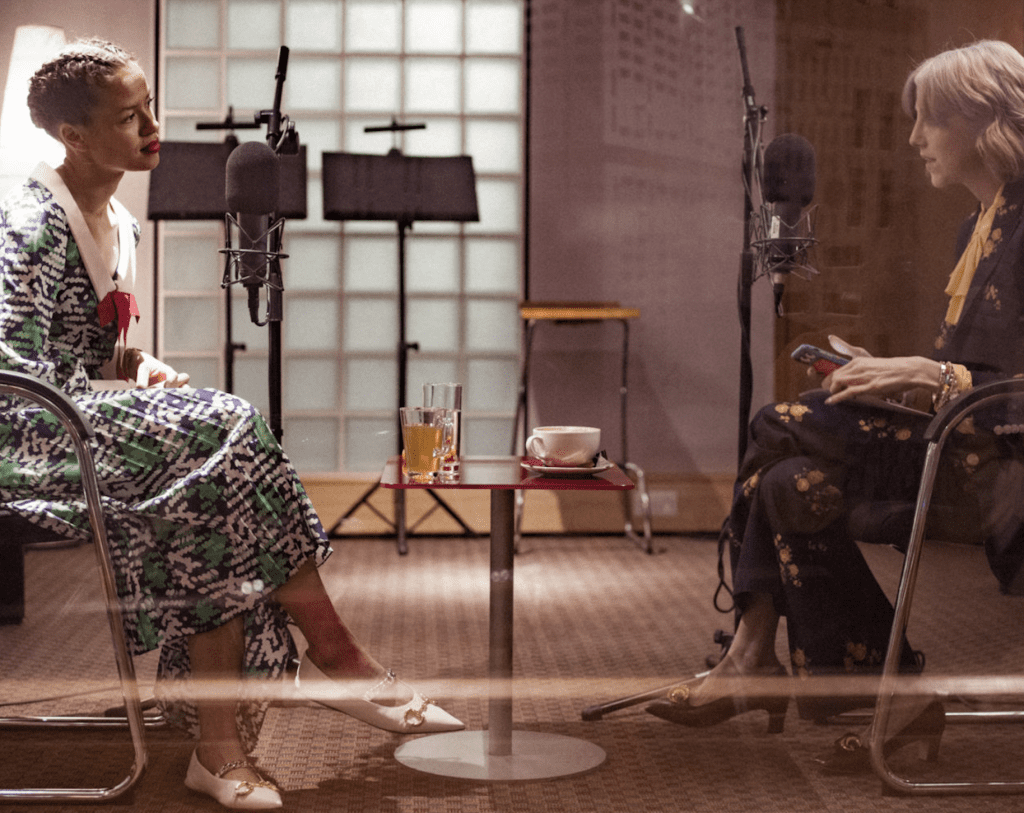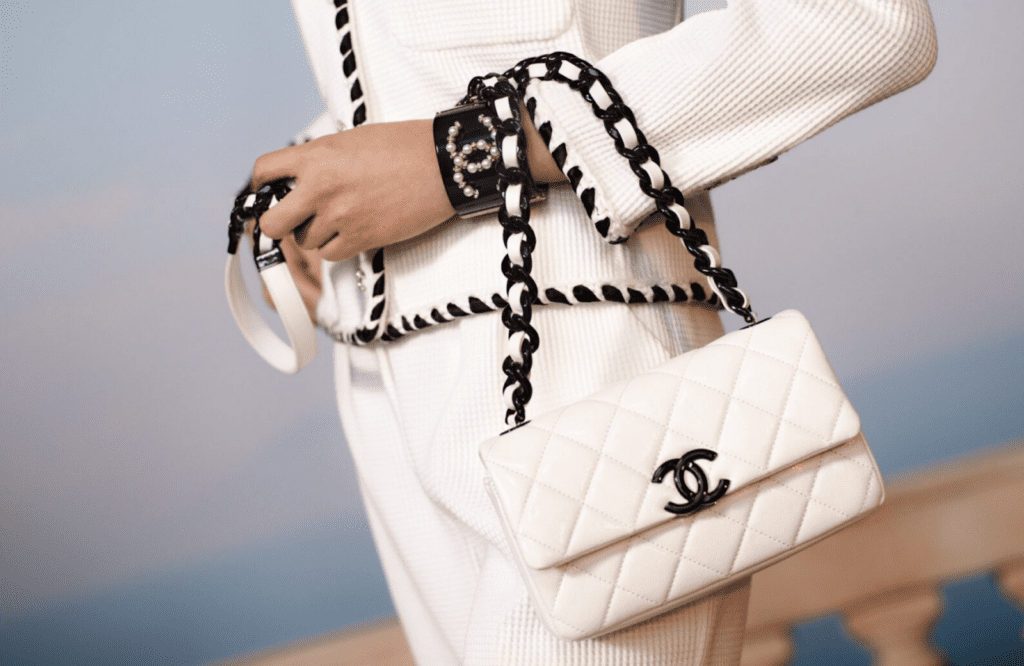Over the past several years, fashion brands have been rolling out podcasts in an attempt to reach consumers in an increasingly broad number of mediums and the pandemic brought this trend to a fever pitch. On the heels of first dipping its toes in the podcasting game back in 2017 by way of its “3.55” series, for instance, Chanel introduced a new podcast venture last year called “Chanel Connects,” in which the French fashion house delivers intimate conversations on the future of culture with the likes of Pharrell, filmmaker Lulu Wang, editorial director Edward Enninful, and curator Andrew Bolton, among others. Not long thereafter, Balmain launched “L’Atelier Balmain,” Versace dropped “Medusa Power Talks,” and Dior debuted “A.B.C.Dior,” while Maison Margiela, Gucci, and Hermès also boast podcasts of their own.
In addition to serving to educate and enthrall consumers by way of their audio efforts, brands are still bolstering their already-robust digital – and in at some cases, print – advertising campaigns during a time when in-person events like runway shows are struggling to find a place in the post-pandemic landscape once again. At the same time, brands are also starting to look to alternative ways to market to and engage with consumers, particularly younger ones, that fit neatly into the zeitgeist. This, of course, is prompting companies to experiment with things like social shopping and live-streaming, and it is seeing early-movers, such as Gucci, Balenciaga, adidas, and Nike enter into partnerships with gaming brands like Fortnite and Roblox or efforts on metaverse platforms like Decentraland and the Sandbox.
This push towards audio that was solidified in fashion (and beyond) to some extent by the likes of podcasts and advertising in the form of video clips that live on social media platforms is likely to continue and develop further. This is not merely due to the sizable amount of time that consumers are spending on social media platforms and in the digital realm more generally. Beyond that, there is likely a welcome home for sonic branding (i.e., the sounds or songs associated with a brand, product, or service) in the so-called metaverse, which is the developing phenomenon that combines immersive virtual reality, massive multi-player online gaming platforms, and various other facets of the web, and which is expected to amount to a fully-immersive online experience should it ever fully come into fruition.
Against this background, there is something that companies might want to consider as they strategize their next moves on the branding-in-the-metaverse front: an audio-specific extension of their branding by way of sonic trademarks. “With consumers moving rapidly toward more audio-centric lives, brands are increasingly looking to sound to develop deeper relationships with customers,” according to Veritonic. The New York-based audio marketing agencyworks with companies to create what it calls “audio logos,” which include everything from “a custom melody when you turn on your car to a unique sound that plays when you buy something in a store.” Such audio trademarks can also be worked into branded podcasts.
And it turns out that many brands – from Amazon, Audi, and Elon Musk’s Hyperloop to Jergens, Gilette, and Wayfair – are working on distinctive sound bites to help cement themselves in the minds of consumers. In light of the large-scale adoption of social media and e-commerce by consumers (including ones that did not engage with the web in such a striking capacity before the onset of the pandemic), paired with the enduring use of video ads by brands and the obvious potential for audio uses when it comes to brands’ budding virtual ventures, the use of sounds as an indicator of source “makes perfect sense,” says digital media strategist Moti Grauman. “It aligns with breaking through the clutter, and it is in sync with the need to reach consumers multiple times” – and in multiple ways – “on various platforms.”
“What your brand sounds like is now just as important as your visual identity,” Lucas Murray of Made Music Studio – a global sonic branding and design studio that counts American Express, Disney, and HBO, among others, as clients – echoes. “The simple fact is that if you want to reach into people’s brains, hearts, and wallets now, you must have a strong, well-designed audio presence.”
Sonic Trademarks & the Protectability of Sound
As for the protectability of sounds as trademarks, the U.S. Patent and Trademark Office, for one, recognizes sounds as trademarks if those sounds are non-functional, and serve to indicate the source of a party’s goods and/or services (i.e., “create in the hearer’s mind an association of the sound with a good or service”). As such, “If a sound makes consumers think of a company’s product or service, it is eligible for trademark registration with the U.S. and other countries,” says Faegre Drinker partner Diane J. Mason.
The same holds true in the European Union, where the General Court held in a case last year that sounds are, in fact, protectable as trademarks, and subject to the same criteria as the other categories of trademarks. Specifically, the General Court held that in order to be registered, sonic trademarks “must have a certain resonance that enables consumers to perceive [the sound] as a trademark and not as a functional component or an indicator of intrinsic characteristics.”
Reflecting on the court’s decision in a case stemming from German drink-maker Ardagh Metal Beverage’s unsuccessful attempt to register the sound of a soda or beer can being opened as a sonic trademark, Graf Isola Rechtsanwälte GmbH attorney Claudia Csaky stated this past summer that the key element in the eyes of the court was “the perception of the sound by the relevant consumers.” A sound mark “must be able to convey the commercial origin of the goods on its own without the support of word elements, images or other trademarks,” she states, noting that while it is not impossible, it, nonetheless, appears “rather difficult to overcome the hurdle of distinctiveness” in the context of sound.
(In that case, the General Court upheld the European Union Intellectual Property Office’s determination that the sound at issue is inherently connected with the use of the goods at issue, namely soda and beer. As such, the average consumer is not likely to view the opening-and-fizzing sound of a beverage can as an indicator of the source of specific branded products, thereby taking sonic trademarks off the table.)
While the sound of an opening drink likely will not be adopted as a source-indicating role within any of fashion’s many podcasts or in their budding endeavors in the metaverse, a spoken version of the slogan, “It’s all about seconds,” for instance, which Chanel uses across its J12 watch ads does, not seem outlandish. Ultimately, it is not difficult to imagine brands coming up with – and seeking and enforcing registrations for – sound marks of their own to include in their often-already-robust trademark arsenals.
This article was initially published in July 2021 but has been updated to consider the role that sonic branding and corresponding trademarks can play in the metaverse.











